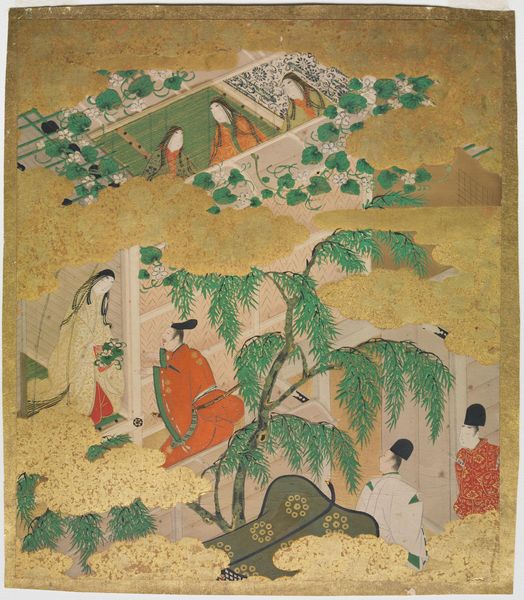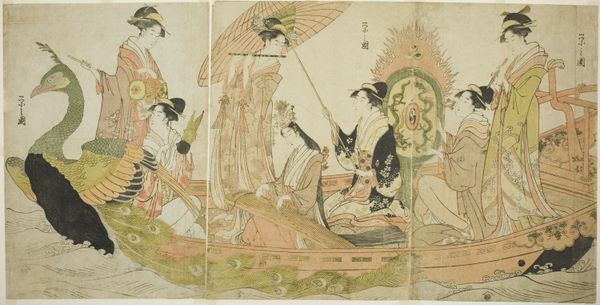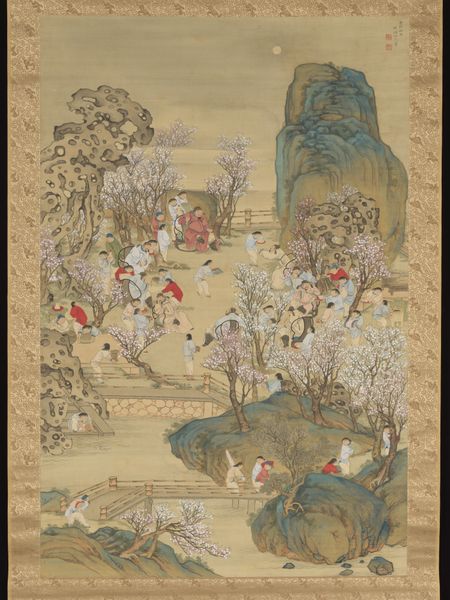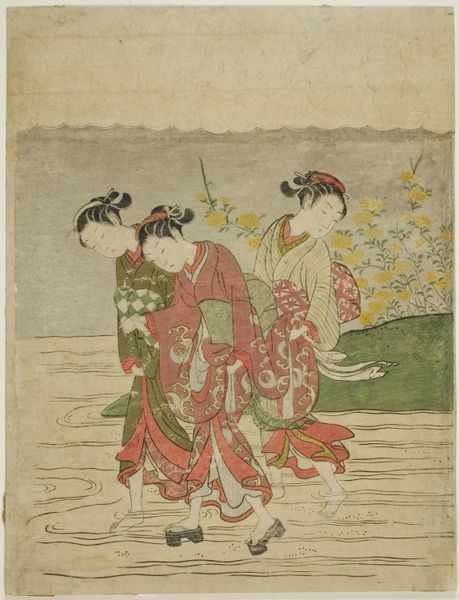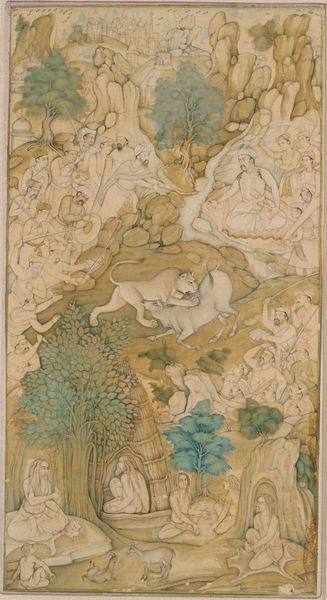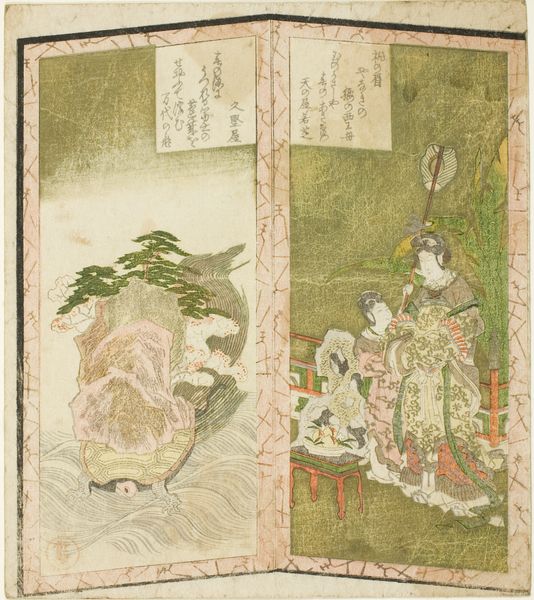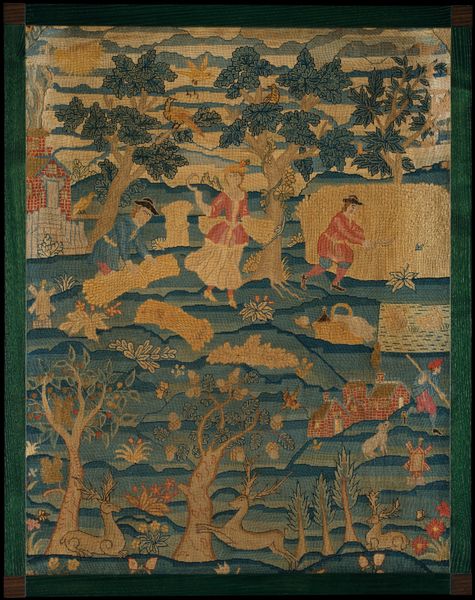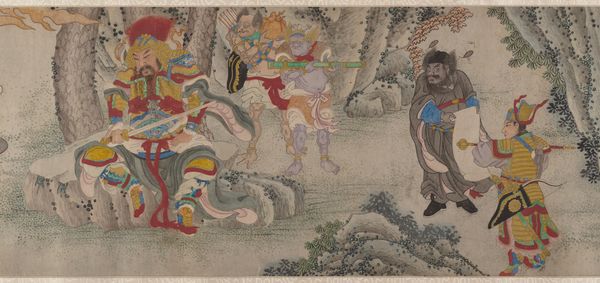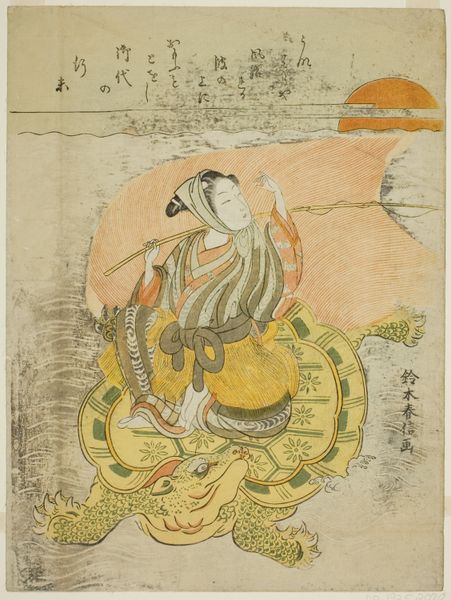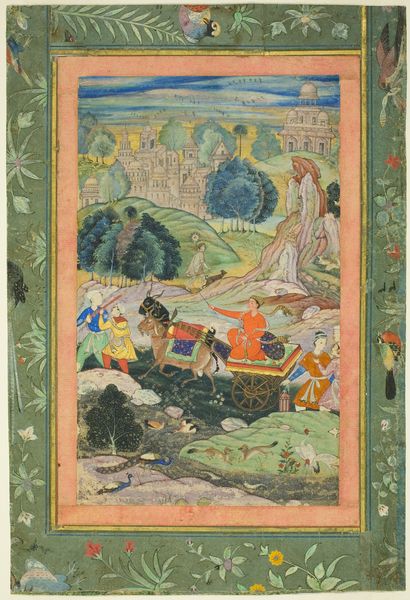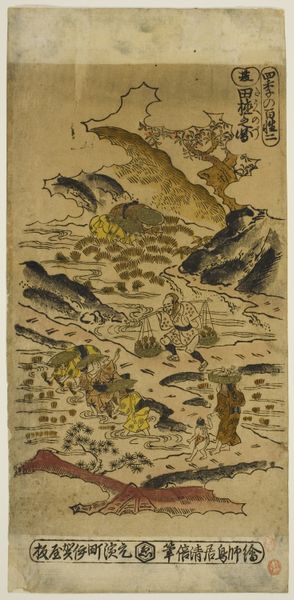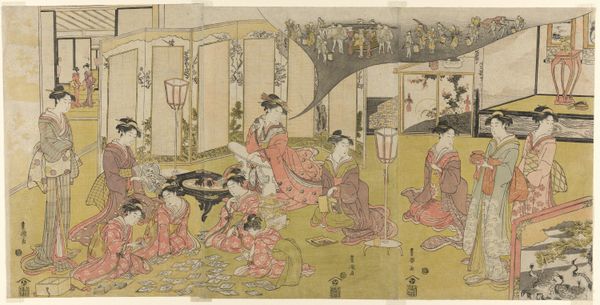
drawing, painting, watercolor
#
drawing
#
water colours
#
narrative-art
#
painting
#
landscape
#
figuration
#
watercolor
#
orientalism
#
watercolour illustration
#
genre-painting
Dimensions: 21 1/4 x 11 7/16 in. (54 x 29.1 cm) (image)24 7/16 x 14 7/16 in. (62 x 36.6 cm) (sheet)
Copyright: Public Domain
Editor: This delightful watercolor painting, titled '(Children Bathing in a River),' dates from the 19th to early 20th century, and the artist is unknown. It’s so charming! I'm immediately struck by its unusual vertical composition and how the eye is led from the top figures, down the image and into a visual and textural density as the bodies overlap one another in a riverbed full of water lilies and slender blades of grass. What do you see in this piece from a formalist point of view? Curator: Initially, it is imperative to consider the structure. Note how the upper grouping and river scene occupies more than half the overall compositional space, above, while at bottom we see lotus flowers creating depth, though the figures’ relation to the pictorial plane seems, perhaps intentionally, ambiguous and confusing in how scale changes. How are we to reconcile those perspectives? What is their formal relationship? Editor: That's interesting, can you say more about perspective and structure? Curator: We are drawn to observe the flatness of the ground plane contrasting with the modelling of human forms, particularly where we see pigment used in representing skin tones to suggest light. A lack of shadowing further enhances that sense of flatness, juxtaposed alongside modeling. The palette remains relatively limited to greens, pinks, tans, blues, reds and yellow which flatten the pictorial space despite suggestions of rounded volume in figures. Notice too, how outlines define contours and separate one element from another in stark distinction, thereby creating what the semiotician would recognize as highly legible components when it comes to analyzing signifiers and signified. Are you understanding the play of these tensions in pictorial space, particularly as they affect depth perception? Editor: Yes, absolutely. So the tension between flatness and volume actually enriches the overall viewing experience, causing the eye to continuously reassess spatial relationships in the piece. It gives it a feeling of being dream-like almost. Curator: Precisely. It becomes more than just a mere depiction, does it not? Editor: Absolutely. Thinking about all the forms and shapes as intentionally constructed now really alters how I understand the entire painting. Thank you for guiding me through this wonderful analysis!
Comments
No comments
Be the first to comment and join the conversation on the ultimate creative platform.
